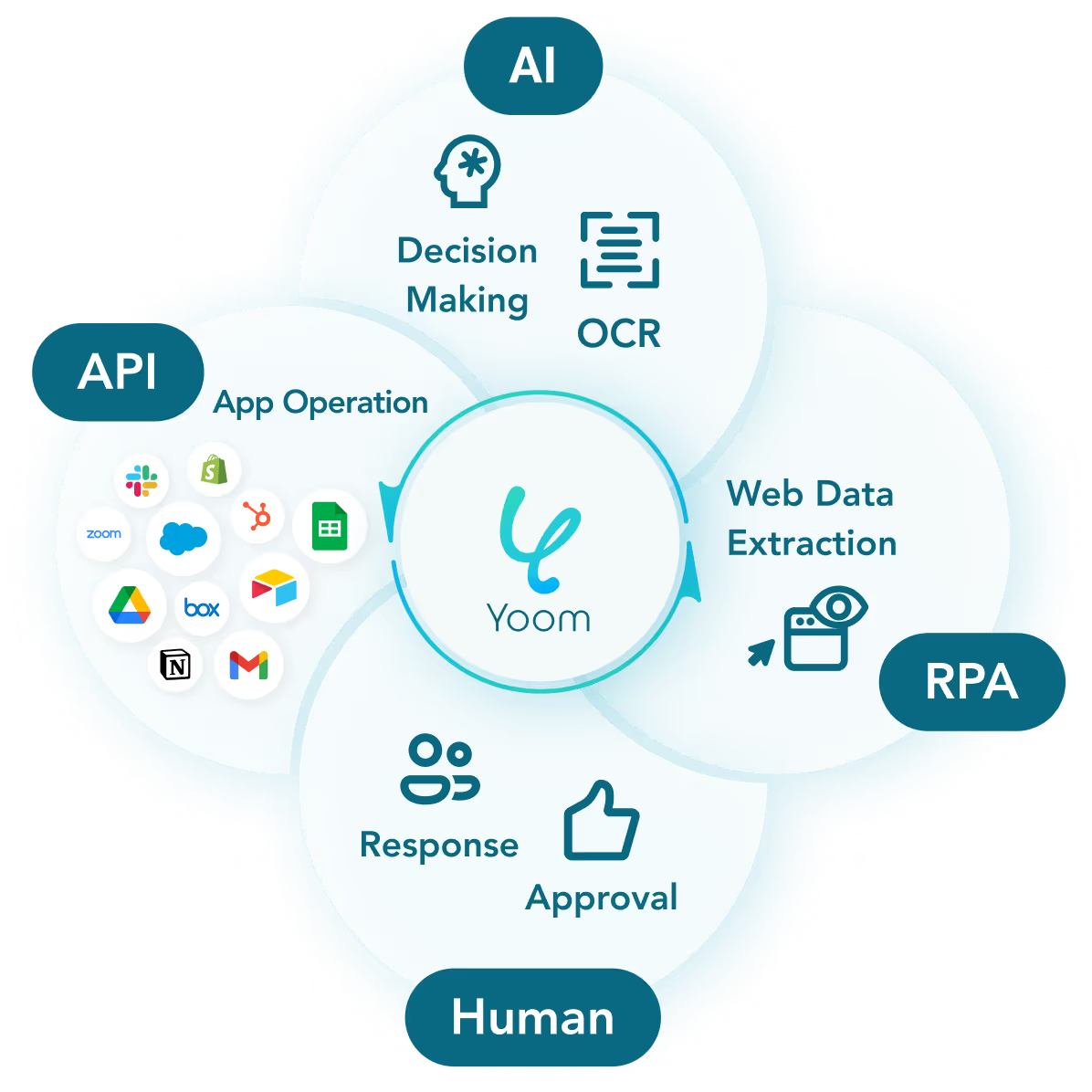
Start free
Functions
Try for free
■Overview
The workflow "Create a new post on WordPress based on information from kintone" assists in content creation tasks.
It enables efficient article creation, leading to improved work efficiency.
■Recommended for
■Benefits of using this template
By linking kintone and WordPress, you can quickly update information.
This allows for the rapid publication of new posts.
By quickly reflecting necessary information on the blog, you can provide information to readers faster, increasing customer satisfaction.
Additionally, it leads to work efficiency by reducing effort.
Since you can directly post on WordPress based on kintone information, it eliminates the need for duplicate data entry, improving work efficiency.




 When a record is added
When a record is added
 When a record is added or edited
When a record is added or edited
 When a record is added (Webhook Trigger)
When a record is added (Webhook Trigger)
 When a record is edited (Webhook Trigger)
When a record is edited (Webhook Trigger)
 When a record is deleted (Webhook Trigger)
When a record is deleted (Webhook Trigger)
 When a comment is posted (Webhook trigger)
When a comment is posted (Webhook trigger)
 When status is updated (Webhook trigger)
When status is updated (Webhook trigger)
 When updated to a specified status (Webhook trigger)
When updated to a specified status (Webhook trigger)
 When updated to a status specified by regular expression (Webhook trigger)
When updated to a status specified by regular expression (Webhook trigger)
 When a post is published
When a post is published
 When a post is updated
When a post is updated
 When a comment is posted
When a comment is posted
 When a user is added
When a user is added
 Get Record Details
Get Record Details
 Search Record IDs
Search Record IDs
 Add Record
Add Record
 Update Record
Update Record
 Post Comment
Post Comment
 Upload File
Upload File
 Link File to Record
Link File to Record
 Get File Keys for a Record
Get File Keys for a Record
 Download File
Download File
 Delete Record
Delete Record
 Search Records by Query
Search Records by Query
 Update Record (Checkbox field)
Update Record (Checkbox field)
 (Guest Space) Get Record Details
(Guest Space) Get Record Details
 (Guest Space) Search Record IDs
(Guest Space) Search Record IDs
 (Guest Space) Add Record
(Guest Space) Add Record
 (Guest Space) Update Record
(Guest Space) Update Record
 (Guest Space) Add Comment
(Guest Space) Add Comment
 (Guest Space) Upload File
(Guest Space) Upload File
 When a record is added
When a record is added When a record is added or edited
When a record is added or edited When a record is added (Webhook Trigger)
When a record is added (Webhook Trigger) When a record is edited (Webhook Trigger)
When a record is edited (Webhook Trigger) When a record is deleted (Webhook Trigger)
When a record is deleted (Webhook Trigger) When a comment is posted (Webhook trigger)
When a comment is posted (Webhook trigger) When status is updated (Webhook trigger)
When status is updated (Webhook trigger) When updated to a specified status (Webhook trigger)
When updated to a specified status (Webhook trigger) When updated to a status specified by regular expression (Webhook trigger)
When updated to a status specified by regular expression (Webhook trigger) Get Record Details
Get Record Details Search Record IDs
Search Record IDs Add Record
Add Record Update Record
Update Record Post Comment
Post Comment Upload File
Upload File Link File to Record
Link File to Record Get File Keys for a Record
Get File Keys for a Record Download File
Download File Delete Record
Delete Record Search Records by Query
Search Records by Query Update Record (Checkbox field)
Update Record (Checkbox field) (Guest Space) Get Record Details
(Guest Space) Get Record Details (Guest Space) Search Record IDs
(Guest Space) Search Record IDs (Guest Space) Add Record
(Guest Space) Add Record (Guest Space) Update Record
(Guest Space) Update Record (Guest Space) Add Comment
(Guest Space) Add Comment (Guest Space) Upload File
(Guest Space) Upload File (Guest Space) Attach File to Record
(Guest Space) Attach File to Record (Guest Space) Get File Keys for Record
(Guest Space) Get File Keys for Record (Guest Space) Download File
(Guest Space) Download File (Guest Space) Delete Record
(Guest Space) Delete Record (Guest Space) Search Records by Query
(Guest Space) Search Records by Query (Guest Space) Update Record (Check box field)
(Guest Space) Update Record (Check box field) Add Rows to Table
Add Rows to Table Update Table rows
Update Table rows Delete files attached to a record
Delete files attached to a record Update record status
Update record status Bulk update record statuses
Bulk update record statuses Update record (User selection field)
Update record (User selection field) Post a comment (with mentions)
Post a comment (with mentions) Add a record (File field)
Add a record (File field) Get comments for a record
Get comments for a record Get one record
Get one record Update subtable rows (multiple rows)
Update subtable rows (multiple rows) Get App Field Information
Get App Field Information When a post is published
When a post is published When a post is updated
When a post is updated When a comment is posted
When a comment is posted When a user is added
When a user is added Retrieve a Specific Post
Retrieve a Specific Post Search Posts
Search Posts Create New Post
Create New Post Update Post
Update Post Get Media Details
Get Media Details Retrieve Category Information
Retrieve Category Information Retrieve Tag Information
Retrieve Tag Information Upload Media
Upload Media Create User
Create User Update User
Update User Delete User
Delete User List Posts
List Posts List Categories
List Categories Get user details
Get user details List users
List users